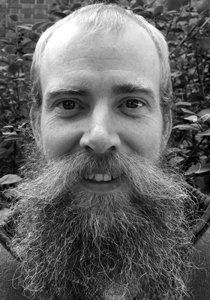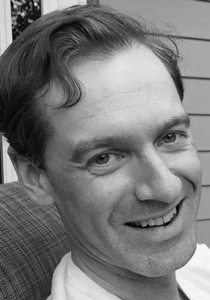Citation for Matthew Steele-MacInnis

It is my pleasure and honor to introduce Matt Steele-MacInnis, recipient of the Hisashi Kuno Award for 2017. It is appropriate for Matt to be recognized by the VGP section of AGU, as he has made significant contributions in volcanology, geochemistry, and petrology, as well as other areas. His research defines and quantifies fundamental chemical and physical processes and provides a sound basis for interpreting field- and laboratory-based observations in a broad range of geologic environments. Matt earned his B.Sc. (Honors) in Earth sciences (with a minor in math) from Memorial University in Newfoundland, where he received numerous honors, including the University Medal for Academic Excellence in Geoscience (Lou Visentin Award). At Virginia Tech, Matt was named an Institute for Critical Technology and Applied Science Doctoral Fellow and, upon completion of his Ph.D., was honored with the Virginia Tech College of Science 2013 Outstanding Doctoral Student Award. During his tenure at Virginia Tech, Matt conducted experimental studies to determine the phase behavior of iron-bearing hydrothermal fluids, developed thermodynamically based methods to interpret volatile contents obtained from melt inclusion analyses, conducted theoretical studies to predict speciation and structural states of ions in solution, and developed numerous numerical methods to interpret fluid chemistry based on laser ablation inductively coupled plasma–mass spectrometry (ICP-MS) and microthermometric analysis of fluid inclusions. Matt’s Ph.D. research, as well as collaborative research with other students and faculty at Virginia Tech and elsewhere, resulted in more than 20 publications in top international journals. Following his Ph.D. studies at Virginia Tech, Matt was awarded the prestigious Marie Curie Postdoctoral Fellowship and conducted postdoctoral research at ETH in Zurich. In 2015, Matt joined the Department of Geosciences at the University of Arizona as a tenure-track assistant professor, and in August 2017 he returned to his native Canada to accept a faculty position at the University of Alberta.
—Robert J. Bodnar, Virginia Polytechnic Institute and State University, Blacksburg
Response
Thank you, Bob, for your kind words and support. I want to thank my nominators, the Volcanology, Geochemistry, and Petrology section, and the Kuno Award Committee for bestowing this honor. I also want to thank many people who have guided me along my career path so far. John Hanchar at Memorial University was instrumental in guiding me toward graduate school and specifically toward joining Bob Bodnar at Virginia Tech. I owe much to Bob. He introduced me to the world of geologic fluids and fluid inclusions, but he also taught me how to be an effective scientist, and he conveyed an infectious enthusiasm and work ethic that drove me and my fellow students to push harder. I am indebted to my cohort of fellow grad students at Bob’s lab, too many to name. During my Ph.D., I spent 1 year as a visitor at GFZ Potsdam, where Christian Schmidt introduced me to experiments on fluids and melts. I was also extremely fortunate to have two exceptional postdoc advisors at ETH Zurich: Both Chris Heinrich and Thomas Driesner broadened my perspectives on geologic fluids immensely, from large-scale processes to microscopic-scale properties. Throughout this time, several early-career colleagues became regular collaborators and helped me branch out into different fields, especially Georg Spiekermann, Rosario Esposito, Joachim Reimer, and Kyle Ashley. And, of course, another regular and long-term collaborator also happens to be my wife, Pilar Lecumberri-Sanchez. I cannot express how grateful I am to Pilar for all of her support. It helps that we can discuss science both at work and at home, without arguing too much.
—Matthew Steele-MacInnis, University of Alberta, Edmonton, Alb., Canada
Citation for James Watkins

James Watkins embodies the essence of modern dynamic petrology and geochemistry, continuing and extending the Kuno legacy of quantitative study of igneous rocks. Jim’s work has combined novel high-temperature experiments, careful isotopic analysis, numerical modeling, and nonequilibrium thermodynamics to bring us a new level of understanding of diffusion-related isotopic effects in magmas and other liquids. He also takes his insight to the field and has produced novel measurements and interpretations of chemical effects around vesicles in glassy lavas that yield information about the pressure history of magma as it approaches eruption. The elegant combination of careful experimental work, detailed observations using multiple methods of analysis, and thoughtful modeling is Jim’s hallmark and places him in a rare class of Earth scientists.
Since establishing his research program at the University of Oregon, Jim’s scientific reach has expanded beyond igneous systems. He has derived and tested with experiment a nearly complete description of nonequilibrium isotopic effects in the formation of calcite from aqueous solution, which puts these effects on a firm theoretical basis and promises to make calcite an even richer recorder of past Earth surface conditions. It also begs us to further investigate departures from equilibrium in high-temperature systems.
Jim exhibits no fear in learning new techniques and theory or bravely tackling daunting problems with which he has little previous experience. But he is also more than comfortable working with multiple collaborators to pool expertise on difficult problems. He is the type of person you want as both a colleague and a friend, and these traits will help him continue to spread his scientific influence in the future. In recognition of his original research in fundamental aspects of magma transport processes and aqueous mineral growth, I am indeed pleased to see James Watkins recognized as a 2017 recipient of the AGU Kuno Award.
—Donald J. DePaolo, University of California, Berkeley
Response
I am very grateful to my nominators and the Kuno committee for this honor and for this rare opportunity to publicly acknowledge those who nurtured my curiosity from a young age.
My father is an accountant who loves numbers, and my mother is a teacher who loves nature. It’s neat to think that these traits are expressed in the work that I do for a living. Despite being from a small town in rural Wisconsin, I received a fine public education thanks to some amazing, yet underappreciated, teachers: Laird, Shelton, Majeski, Flynn, Hughes, and Rosenbush—thank you for your unwavering dedication.
University of Wisconsin–Eau Claire was a wonderful place to receive a liberal arts education. Getting into Berkeley was a dream, and I’m forever thankful to Don DePaolo and Michael Manga for taking a chance on me, teaching me how to (among many other things) integrate experiments with mathematical models, and for all the wisdom and resources they continue to provide. I met a lot of brilliant people at Berkeley; Rick Ryerson and Chris Huber were that and more—special thanks to them for basically being my third and fourth Ph.D. advisors.
The University of Oregon invested in me early, and I share this award with my tremendously supportive UO colleagues. I also appreciate my collaborators from other institutions, in particular, Jim Gardner, Fang-Zhen Teng, Casey Saenger, Laurent Devriendt, Kenny Befus, Kate Huntington, Jon Hunt, and Shaun Brown—it is a delight working with all of you alongside our students. There are many others not mentioned here who have had a positive impact on me, wittingly or not, and I will thank them individually in person. Finally, I thank my wife and personal seismologist, Amanda Thomas, for all her support. My favorite collaborative project is rearing our lovely daughter, Ophelia.
—James Watkins, University of Oregon, Eugene
Citation:
(2017), Steele-MacInnis and Watkins receive 2017 Hisashi Kuno Award, Eos, 98, https://doi.org/10.1029/2017EO086249. Published on 10 November 2017.
Text © 2017. The authors. CC BY-NC-ND 3.0
Except where otherwise noted, images are subject to copyright. Any reuse without express permission from the copyright owner is prohibited.
